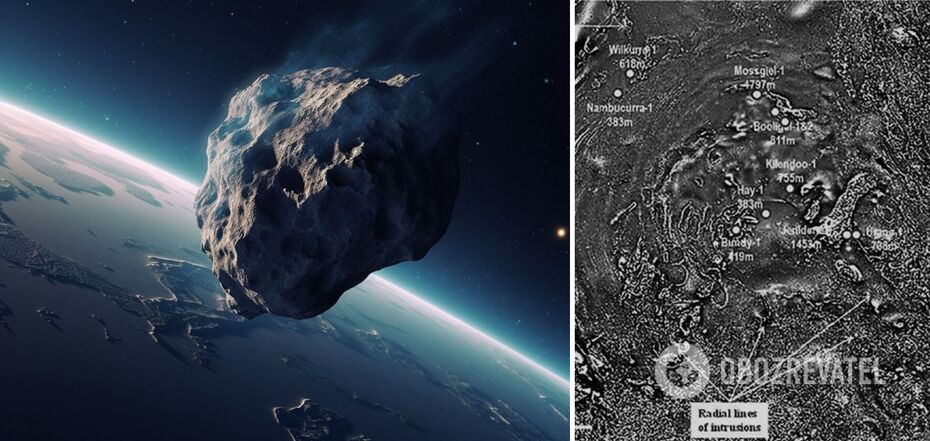Life
A giant structure has been found on the ocean floor that may be the largest on Earth
At the bottom of the ocean off the coast of New South Wales (Australia) is hidden the largest impact crater in the world, formed about 445 million years ago, when a giant asteroid probably hit the Earth. This crater extends almost 520 kilometers and is the largest impact structure on the planet.
About their discovery told in an article for the scientific journal Tectonophysics adjunct professor from the University of Sydney Andrew Glickson and his colleague Tony Yates. They named the discovered crater Denilikin.
Previously, the Vredefort crater in South Africa was considered the largest impact structure on Earth. Its diameter, according to various estimates, is 250-300 kilometers.
Scientists suggest that Denilikin was formed about 445 million years ago and since then has been hidden from people under the ocean. Scientists also say that it is increasingly difficult to identify such craters on the surface of the Earth, as such structures over time are subject to erosion and become almost invisible.
"The history of asteroid bombardment of Earth is largely hidden," Glickson wrote in The Conversation article.
He explains that when an asteroid hits, it creates a crater that can erode over millions of years, becoming less visible. It could also be swallowed up by a collision between Earth's tectonic plates, when one plate overlaps the other.
The existence of the Denilikin structure was first hypothesized in the late 1990s by Yates based on magnetic patterns. Further analysis, completed in 2020, confirmed that a large structure does indeed exist beneath a region in southern New South Wales, although without definitive evidence that it was caused by a collision.
However, there is some strong evidence that the structure is an asteroid crater, such as symmetrical ripples in the Earth's crust that could be caused by the extreme temperatures of the impact, and "radial faults" that are often found in other impact structures.
So far, researchers have been able to produce detailed maps that show exactly where the asteroid might have fallen. Now they are studying geologic findings to better understand what happened then. To do this, they are examining ecta - material that bounces off the Earth when it collides with a space "alien" and may be far from the impact site.
Scientists recognize that officially call the crater discovered by them the largest in the world will only be possible when further research will be conducted to confirm its size.
It should be noted that the discovered crater is not only larger than its African "relative", but also larger than the infamous Chicxulub - the crater formed as a result of the fall of an asteroid that killed all the dinosaurs on Earth. So it's scary to imagine what was on the planet when the rock that formed Denilikina fell.
Scientists note that the date of the asteroid fall, in their opinion, coincides with the Ordovician extinction, which occurred about 445 million years ago and wiped out 85% of all life on Earth.
Earlier OBOZREVATEL also told about the fact that scientists believe that the ancient meteorite 2.29 billion years ago replaced the Earth and could have contributed to the emergence of life.
Subscribe to OBOZREVATEL channels in Telegram and Viber to be aware of the latest events.




























